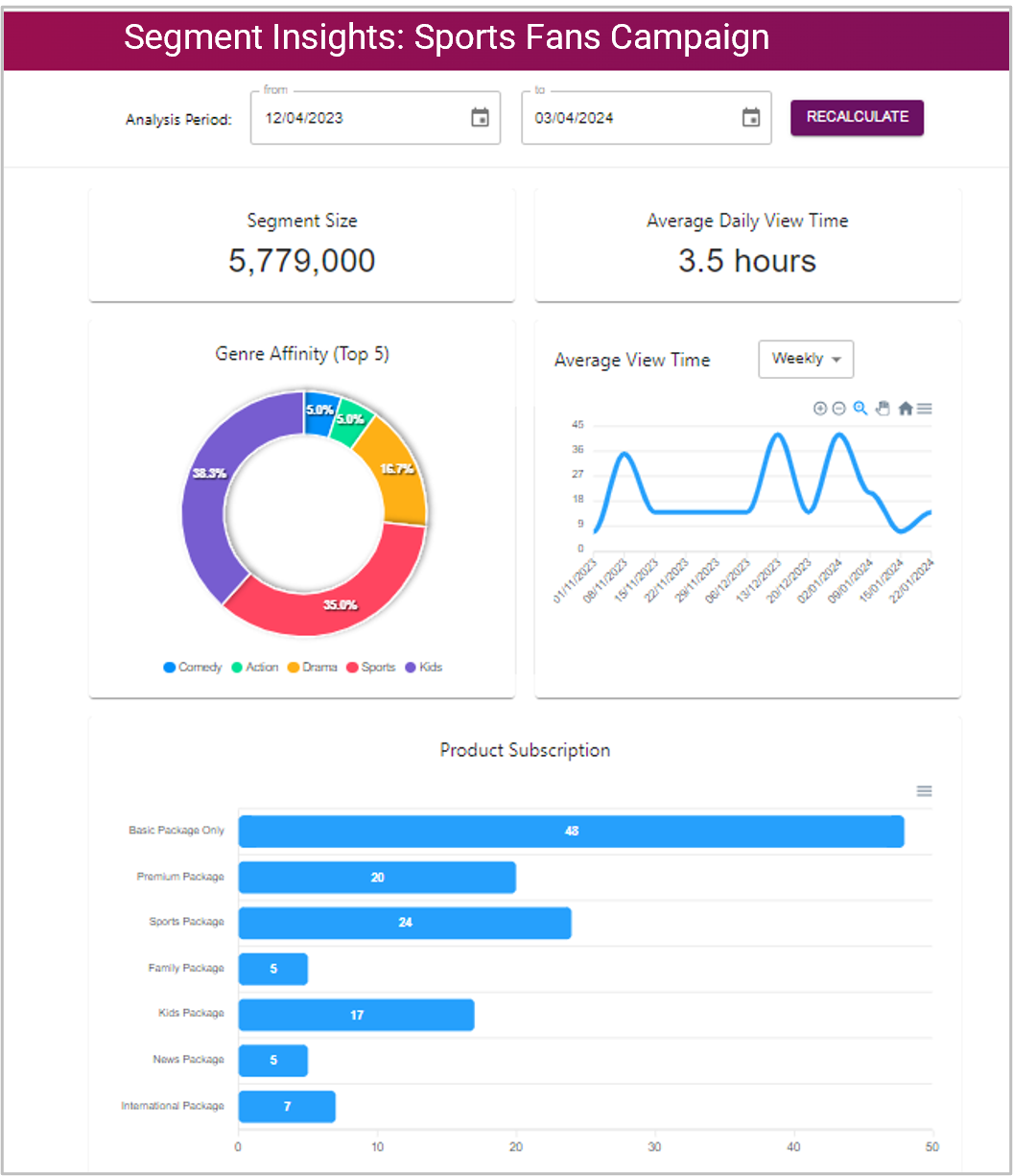The ability to create accurate and precise segments from data is one of the keys to a successful business strategy, but there are definite challenges that need to be overcome.

Being able to understand data is one of the most important skills in modern business. It is hard to think of a successful venture, especially in the digital age, which does not rely on expertise in data analysis somewhere along the line. And whether it is broadcasters and operators surfacing recommendations, retailers targeting products at specific audiences, or advertisers pursuing niche groups of people via targeted advertising, the need to go one stage further and be able to subdivide users into specific segments is critical for success.
Segmentation allows businesses to effectively leverage their data insights by categorizing audiences based on common characteristics or behaviors, enabling targeted strategies that resonate with specific segments.
For the video industry in particular, this capability is vital, especially with the growing importance of ad-supported services, offered both individually as AVOD or FAST, or as part of a multi-tiered offering. We are seeing requests for audience segmentation technology in an increasing number of RFPs from broadcasters around the world as they look to leverage their first-party data to offer advertisers more accurate segments and to understand their audience better.
There are four main use cases for segmented data within the broadcast sphere. Targeted advertising, which we have already mentioned, is obviously a significant one. But there are additional use cases where operators need to categorize customers into different segments so they can personalize interactions, provide personalized on screen user experience and customer service, and implement appropriate retention strategies for each segment. Specific customer segments can also be targeted with tailored marketing messages to upsell product offerings, as well as specific content promotions according to user preferences and behavior. Segments can further be used to identify problems in a business such as increased churn within specific audiences and accelerate both their identification and their remediation.
As ever with data, numbers on their own are just that, numbers. The challenge is in understanding what to do with them. And it is partly because of this that we have developed a unique segmentation tool that can be applied for all these use cases.
The next phase in audience segmentation
Our approach to audience segmentation required developing new capabilities that combine intuitive rule-based queries with powerful AI/ML models and generative AI to enable our customers to segment viewers based on multiple different criteria.
Our solution, called VO Segmenter, has a couple of important distinguishing features. First is its ecosystem-wide data proficiency. Rather than focusing on one aspect of the chain, we collect and analyze data from every part of the video delivery ecosystem, including backend servers and databases, set-top boxes, player apps, content metadata, and user interactions. This provides a complete and holistic understanding of an audience and the market dynamics that are guiding their decisions.
It is this capability that augments first-party data and ensures that any resulting segments are fully compliant with laws such as Europe’s GDPR.
Second, the precise data that it produces is further enhanced by an intuitive interface. This supports both rule-based queries and generative-AI capabilities, allowing users to define segments through natural language models, while ensuring precise audience segmentation. Above and beyond this, pre-trained AI/ML models also allow users to create sophisticated segments that maximize impact, expanding on the capabilities of making simple queries to produce cross-referenced segments that pull data from multiple categories.
These queries fall into four main fields: geographic, demographic, psychographic, and behavioral.
- Geographic: Location-based, down to city district level
- Demographic: Age, gender, household composition, etc.
- Psychographic: Favorite genres, programs, channels etc.
- Behavioral: Time of viewing, low engagement, binge watching, etc.

Using the intuitive dashboards, it is now a simple task to build a segment of, for example, sports fans in a capital city that only watch matches at the weekend, or binge-watching reality show fans in a certain region that are in danger of churning. Whether the desire is to target them with ads or increase their level of engagement with tempting offers, we can allow video service providers to understand their audience in ways that simply were not possible before.
Knowledge is success, revenue and more
Audience segmentation is emerging as a cornerstone of business strategies across multiple industries, and it is increasingly vital for effective operation in a hugely competitive video industry. Even if we only consider first-party data, most of today’s video service providers are inundated with information, but it is not always clear how to maximize it to drive viewer engagement and increase monetization.
For maximum effectiveness video providers need to do three things. First is collating data regarding viewers and viewer behaviour across the whole length of their chain. This gives them a holistic picture of the audience and ensures that no siloed part of the viewing experience can skew the results towards inaccuracy. Second is to analyze the data and extrapolate insights from it, using AI and machine recognition for pattern analysis to build out a fuller picture of the audience than first-party data alone can provide. And finally, they need efficient ways to interpret it, user-friendly interfaces that can create the segments that advertisers demand and provide actionable insights that allow them a deep understanding of their audience.
Of course, they need to back this up. There is little point having excellent data without the ad tech stack to be able to implement effective target advertising, or the sophisticated control of end user interfaces and screen real estate to offer personalized recommendations and user experience and create effective marketing campaigns. But actionable data insights is the fountainhead from which everything else springs.
The old saying has it that ‘knowledge is power’. When it comes to business data it is also revenue, customer satisfaction, monetization and more, and its efficient analysis and precise interpretation is a critical component for success.
